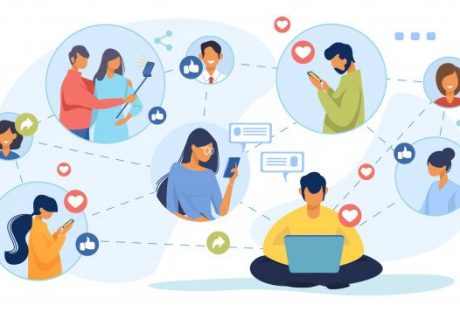Every parent wants his or her kid to get the best education possible. We send them to the best schools, enroll them in the best coaching or tuition centers, and ensure that they are happy and contented. We also try to create the best learning atmosphere at home, with separate rooms, dedicated study tables, charts, globes, informative books, encyclopedias, and other necessities.
However, as parents, we fail to take into account one very important aspect. Education in general and the educational system in particular, has evolved rapidly. Curriculums are changing, teaching methods are changing and this is reflected in many areas. The advent of smart classrooms in schools and colleges is a case in point.
The Benefits of Imparting Knowledge through Technology:
In these changing times, and with the advent of digital technology, it is possible for you as a parent to help your child stay ahead of his or her competition in many ways through apps. Children are exposed to electronic devices like smartphones, tablets, and laptops at an early age.
Science has shown that a child’s brain is most active and curious when he is exposed to newer things, models and electronics. With this in mind, learning through Mobile Applications or Apps, as we fondly refer to them, will help the child absorb learning techniques and grasp educational curriculums faster than traditional models of learning.
Why the Traditional School or Classroom System of Education is not enough:
A standard class strength comprises of roughly 40 to 50 children, depending on the type of school. A standard study period comprises of 25 to 30 minutes. Imagine yourself in the position of your child who has just been introduced to Algebra in Class 5. Do you think that he will have all his queries and doubts being cleared by the teacher in 25 minutes, given that there would be 40 of his classmates who would be having similar doubts?
You would say that Tuitions might be an answer, but private tuitions and tuition centers have turned into commercial enterprises that have their own intentions at heart, namely finances. In such a situation, we have seen numerous children bearing a deep aversion to certain subjects-
Mathematics: It is difficult to understand, I am scared of it, or I might just pass.
History: It is quite boring, I do not feel engaged, or the teacher is quite dull.
The list of subjects can go on and on, but the problems enumerated will surely strike a chord with you and your child or the child of your near and dear ones. A parent would want their child to be confident, autonomous, independent and clear. Sometimes, we just need to empower them and let them find their own way.
Why Educational Apps is Beneficial?
The Digital Revolution has made life easier for almost everyone, and the education segment is no different. Learning, which used to be a dull and boring system, can now be fun and engaging thanks to mobile apps, which have revolutionized and transformed the education industry.
By a simple download on mobile phones or tablets, children can have access to the best quality of education, guided by subject experts, at a time of their convenience. Suppose there is a test tomorrow, and your child does not have access to a tuition teacher. What are you going to do to ease his fear? You might want to download the app and help him clarify his doubts with a virtual teacher.
In this article, we look at some of the most pertinent reasons that have transformed the lives of children for the better in education and learning-
1. So many options to choose from:
The variety of options to learn on these apps are various and quite diverse. Be it your child’s favourite subject or the most difficult one, the concepts are explained in a fun, engaging and dynamic way to make it easy for them to understand. One of the crucial aims of any online learning platform is to make the child understand concepts and solutions in a fun and healthy manner. This dissolves monotony and encourages children to pick up newer models of learning in a much faster manner.
2. Ease of Access:
Knowledge and information, both, are easily available through these apps. Both are available just a click away. The information is visually available on your screen at all times- 24X7! As compared to a classroom, which has strict hours of learning, children can take up virtual learning at any time of the day, or at periods when they are most available and open or receptive, or when they need it the most, like clearing last minute doubts, a night before the examinations.
3. Limitless Learning:
It is now possible to gain information anytime anywhere through these learning apps as it will let us learn whatever we want from wherever we are (any place). All the geographical information for geography lovers or all the information on mathematical topics like Real numbers and Probability questions is available with detailed explanation and videos to make it easy to understand and learn from the very place you are at, whether it be home, on your way to your child’s examination, or even the dinner table!
4. Access to best Educational Experts:
These educational apps have content and videos explained by educators/teachers. Theypossess years of experience in dealing and nurturing young minds. They are familiar with the latest curriculums and are certified from the highest regulatory bodies. The educators on educational apps are subject experts who use fun and informative ways to get the learning across. This takes away the monotony and helps the child grasp newer concepts better.
5. Engagement rate increases:
Watching Videos and listening to audios helps students retain the information for a longer period. In other words, the retention power is increased substantially. Apart from this, apps also engage the student in a better way by showing how the concept works in practice, rather than just reading it, or explaining it theoretically. It has been scientifically proven that visual learning has a higher power of retention than just audio learning.
Educational Apps: The Final Word:
As we had earlier mentioned, education, like other segments of human lives is being exposed and used for all the right reasons. The future of education is accessibility, ease of advice, engagement and breaking the monotony of traditional learning techniques.
Educational Apps are bringing forth this very useful and appropriate change in how we define the future for our children. If we are able to exploit the potential of these educational apps, we can rest assure that our child will be happy with his studies, and this in turn, will help him or her develop a better and more confident personality.
Read Also:
- Read This If You Are Appearing For This Year’s JEE
- Benefits Of Using Technology To Ace Your Physics
- Kids Will Get These Benefits If They Learn Coding
- Cracking The Criteria Cognitive Aptitude Test (CCAT) – Unwrapping Its Various Layers!
Download or Subscribe to the BYJU’S YouTube Channel to explore a new and engaging way of learning.






















